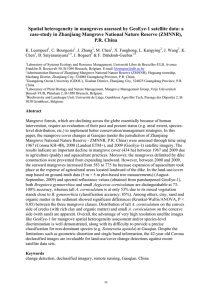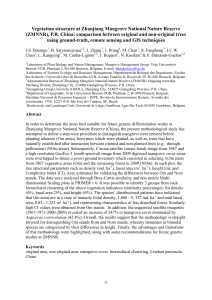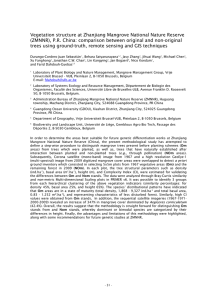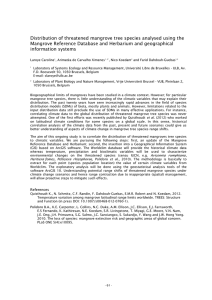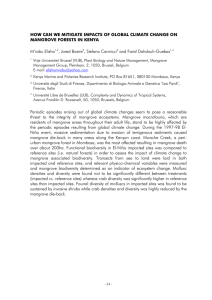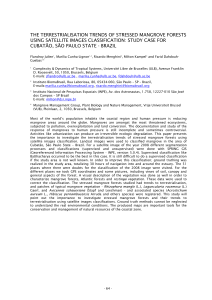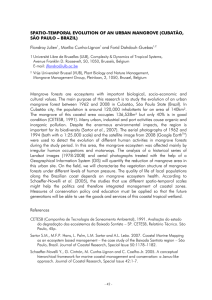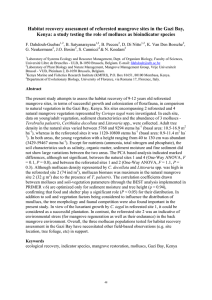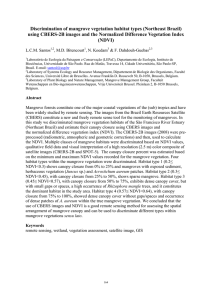BIOTIC AND ABIOTIC FACTORS INFLUENCING THE MANGROVE
advertisement
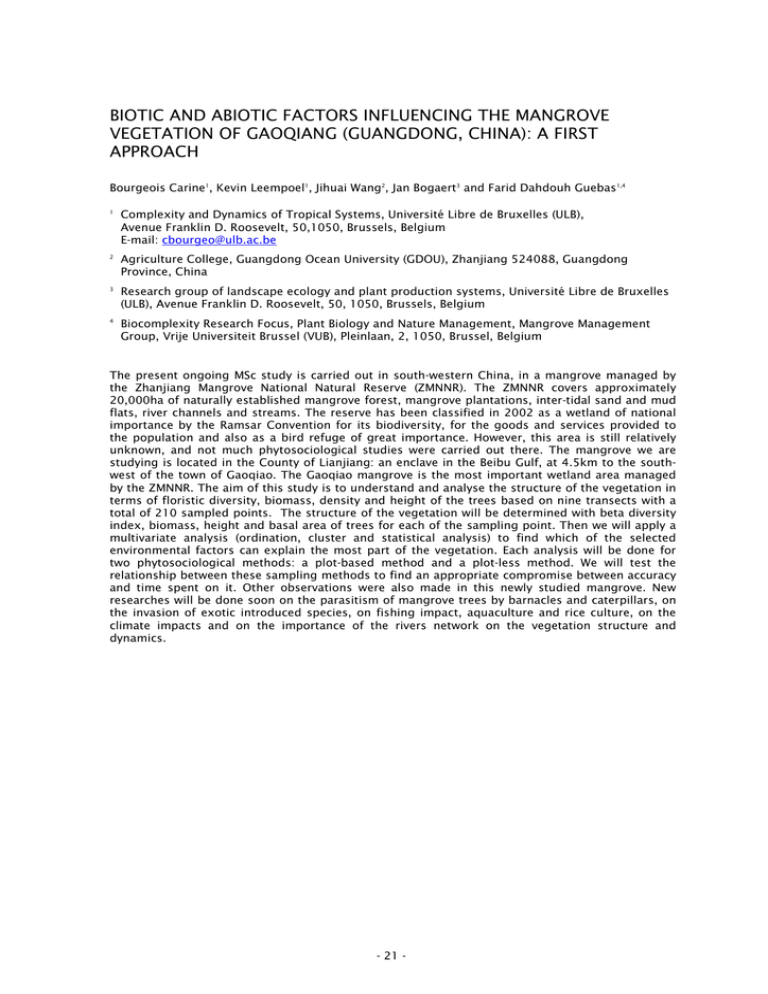
BIOTIC AND ABIOTIC FACTORS INFLUENCING THE MANGROVE VEGETATION OF GAOQIANG (GUANGDONG, CHINA): A FIRST APPROACH Bourgeois Carine1, Kevin Leempoel1, Jihuai Wang2, Jan Bogaert3 and Farid Dahdouh Guebas1,4 1 Complexity and Dynamics of Tropical Systems, Université Libre de Bruxelles (ULB), Avenue Franklin D. Roosevelt, 50,1050, Brussels, Belgium E-mail: cbourgeo@ulb.ac.be 2 Agriculture College, Guangdong Ocean University (GDOU), Zhanjiang 524088, Guangdong Province, China 3 Research group of landscape ecology and plant production systems, Université Libre de Bruxelles (ULB), Avenue Franklin D. Roosevelt, 50, 1050, Brussels, Belgium 4 Biocomplexity Research Focus, Plant Biology and Nature Management, Mangrove Management Group, Vrije Universiteit Brussel (VUB), Pleinlaan, 2, 1050, Brussel, Belgium The present ongoing MSc study is carried out in south-western China, in a mangrove managed by the Zhanjiang Mangrove National Natural Reserve (ZMNNR). The ZMNNR covers approximately 20,000ha of naturally established mangrove forest, mangrove plantations, inter-tidal sand and mud flats, river channels and streams. The reserve has been classified in 2002 as a wetland of national importance by the Ramsar Convention for its biodiversity, for the goods and services provided to the population and also as a bird refuge of great importance. However, this area is still relatively unknown, and not much phytosociological studies were carried out there. The mangrove we are studying is located in the County of Lianjiang: an enclave in the Beibu Gulf, at 4.5km to the southwest of the town of Gaoqiao. The Gaoqiao mangrove is the most important wetland area managed by the ZMNNR. The aim of this study is to understand and analyse the structure of the vegetation in terms of floristic diversity, biomass, density and height of the trees based on nine transects with a total of 210 sampled points. The structure of the vegetation will be determined with beta diversity index, biomass, height and basal area of trees for each of the sampling point. Then we will apply a multivariate analysis (ordination, cluster and statistical analysis) to find which of the selected environmental factors can explain the most part of the vegetation. Each analysis will be done for two phytosociological methods: a plot-based method and a plot-less method. We will test the relationship between these sampling methods to find an appropriate compromise between accuracy and time spent on it. Other observations were also made in this newly studied mangrove. New researches will be done soon on the parasitism of mangrove trees by barnacles and caterpillars, on the invasion of exotic introduced species, on fishing impact, aquaculture and rice culture, on the climate impacts and on the importance of the rivers network on the vegetation structure and dynamics. - 21 -

